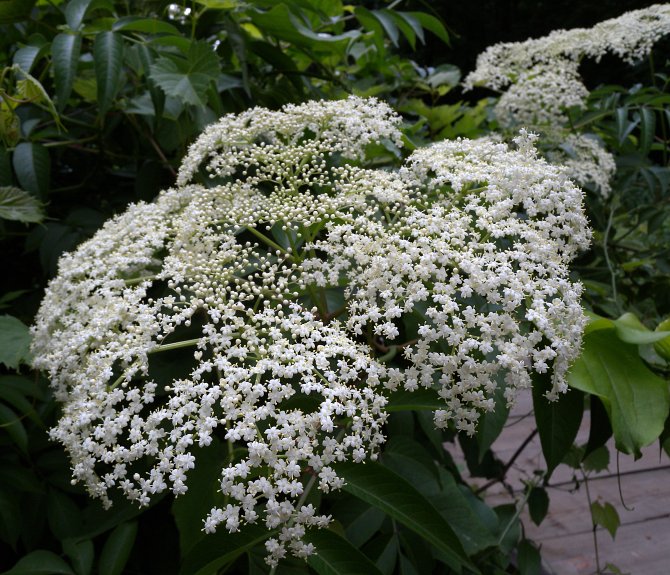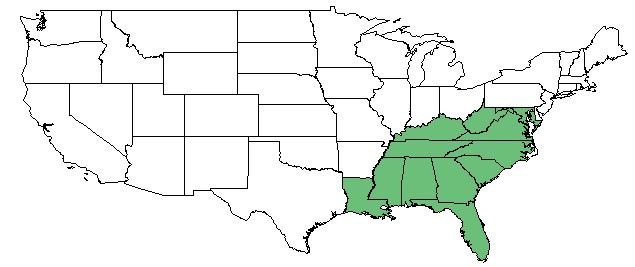Difference between revisions of "Sambucus canadensis"
| Line 1: | Line 1: | ||
{{italic title}} | {{italic title}} | ||
| + | Common name: common elderberry <ref name= "Weakley 2015"/>, American black elderberry <ref name= "USDA Plant Database"/> | ||
<!-- Get the taxonomy information from the NRCS Plants database --> | <!-- Get the taxonomy information from the NRCS Plants database --> | ||
{{taxobox | {{taxobox | ||
Revision as of 12:21, 12 June 2018
Common name: common elderberry [1], American black elderberry [2]
| Sambucus canadensis | |
|---|---|

| |
| Photo by John Hilty hosted at IllinoisWildflowers.info | |
| Scientific classification | |
| Kingdom: | Plantae |
| Division: | Magnoliophyta - Flowering plants |
| Class: | Magnoliopsida - Dicots |
| Order: | Dipsacales |
| Family: | Caprifoliaceae |
| Genus: | Sambucus |
| Species: | S. canadensis |
| Binomial name | |
| Sambucus canadensis (L.) R. Boll | |

| |
| Natural range of Sambucus canadensis from USDA NRCS Plants Database. | |
Contents
Taxonomic Notes
Synonyms: S. nigra Linnaeus ssp. canadensis (Linnaeus) R. Bolli
Varieties: none
Description
S. canadensis is a perennial shrub/tree of the Caprifoliaceae family native to North America, Canada, and Puerto Rico and introduced to Hawaii, the U.S. Virgin Islands, and the Pacific Basin. [2]
Distribution
S. canadensis is found: everywhere in the United States excluding Washington, Oregon, Idaho, Nevada, and Utah; the Manitoba, Ontario, Quebec, New Brunswick, and Nova Scotia areas of Canada; every island of Hawaii; Puerto Rico; the Pacific Basin; and the U.S. Virgin Islands. [2]
Ecology
Habitat
S. canadensis proliferates in streambanks, thickets, marshes, moist forests, and disturbed areas. [1]
Phenology
S. canadensis flowers January-August. [3] The leaflets, particularly of young shoots or stunted sprouts, are often variegated. This is one of the first woody plants to leaf out in the spring. The variation is clinal, and bipinnate leaves are seen as far north as coastal NC. [1]
Fire ecology
S. canadensis is not fire resistant, but has a medium fire tolerance. [2]
Use by animals
S. canadensis is some palatable to browsing animals. [2]
Conservation and Management
Cultivation and restoration
Photo Gallery
References and notes
- ↑ 1.0 1.1 1.2 Weakley, A. S. (2015). Flora of the Southern and Mid-Atlantic States. Chapel Hill, NC, University of North Carolina Herbarium.
- ↑ 2.0 2.1 2.2 2.3 2.4 USDA Plant Database https://plants.usda.gov/core/profile?symbol=SANIC4#
- ↑ PanFlora Author: Gil Nelson URL: http://www.gilnelson.com/PanFlora/ Date Accessed: 5/29/18